 W
WMesoamerica is a historical region and cultural area in North America. It extends from approximately central Mexico through Belize, Guatemala, El Salvador, Honduras, Nicaragua, and northern Costa Rica. Within this region pre-Columbian societies flourished for more than 1000 years before the Spanish colonization of the Americas. Mesoamerica was the site of two of the most profound historical transformations in world history: primary urban generation, and the formation of New World cultures out of the long encounters among Indigenous, European, African and Asian cultures.
 W
WAztec mythology is the body or collection of myths of Aztec civilization of Central Mexico. The Aztecs were Nahuatl-speaking groups living in central Mexico and much of their mythology is similar to that of other Mesoamerican cultures. According to legend, the various groups who were to become the Aztecs arrived from the north into the Anahuac valley around Lake Texcoco. The location of this valley and lake of destination is clear – it is the heart of modern Mexico City &ndash, but little can be known with certainty about the origin of the Aztec. There are different accounts of their origin. In the myth the ancestors of the Mexica/Aztec came from a place in the north called Aztlan, the last of seven nahuatlacas to make the journey southward, hence their name "Azteca." Other accounts cite their origin in Chicomoztoc, "the place of the seven caves," or at Tamoanchan.
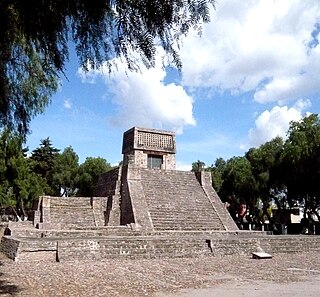 W
WThe Aztec religion originated from the indigenous Aztecs of central Mexico. Like other Mesoamerican religions, it also has practices such as human sacrifice in connection with many religious festivals which are in the Aztec calendar. This polytheistic religion has many gods and goddesses; the Aztecs would often incorporate deities that were borrowed from other geographic regions and peoples into their own religious practices.
 W
WIn Aztec mythology, the Centzonhuītznāhua were the gods of the southern stars. They are the elder sons of Cōātlīcue, and their sister is Coyolxāuhqui. They and their sister tried to murder their mother upon learning of her pregnancy with Huītzilōpōchtli; their plan was thwarted when their brother sprang from the womb—fully grown and garbed for battle—and killed them all.
 W
WChimalman or Chīmalmā is a goddess in Aztec mythology, and was considered by the Aztecs to be the mother of the Toltec god Quetzalcoatl. Her name means "shield-hand."
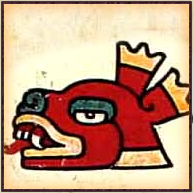 W
WDogs have occupied a powerful place in Mesoamerican folklore and myth since at least the Classic Period right through to modern times. A common belief across the Mesoamerican region is that a dog carries the newly deceased across a body of water in the afterlife. Dogs appear in underworld scenes painted on Maya pottery dating to the Classic Period and even earlier than this, in the Preclassic, the people of Chupícuaro buried dogs with the dead. In the great Classic Period metropolis of Teotihuacan, 14 human bodies were deposited in a cave, most of them children, together with the bodies of three dogs to guide them on their path to the underworld.
 W
WHuehueteotl WAY-way-TAY-oh-təl; Nahuatl pronunciation: [weːweˈteoːt͡ɬ] is an aged Mesoamerican deity figuring in the pantheons of pre-Columbian cultures, particularly in Aztec mythology and others of the Central Mexico region. The spellings Huehuetéotl and Ueueteotl are also used. Although known mostly in the cultures of that region, images and iconography depicting Huehueteotl have been found at other archaeological sites across Mesoamerica, such as in the Gulf region, western Mexico, Protoclassic-era sites in the Guatemalan highlands such as Kaminaljuyú and Late-Postclassic sites on the northern Yucatán Peninsula. The name Huehueteotl stems from Nahuatl huēhueh [ˈweːweʔ] ("old") and teōtl [ˈteoːt͡ɬ] ("god"). It seems to connect the Old God to certain Mayan deities called Mam ("Grandfather").
 W
WThe practice of human sacrifice in Pre-Columbian cultures, in particular Mesoamerican and South American cultures, is well documented both in the archaeological records and in written sources. The exact ideologies behind child sacrifice in different pre-Columbian cultures are unknown but it is often thought to have been performed in order to placate certain gods.
 W
WThe representation of jaguars in Mesoamerican cultures has a long history, with iconographic examples dating back to at least the mid-Formative period of Mesoamerican chronology. The jaguar is an animal with a prominent association and appearance in the cultures and belief systems of pre-Columbian Mesoamerican societies in the New World, similar to the lion and tiger in the Old World. Quick, agile, and powerful enough to take down the largest prey in the jungle, the jaguar is one of the biggest felids in Central or North America, and one of the most efficient and aggressive predators. Endowed with a spotted coat and well adapted for the jungle, hunting either in the trees or water, making it one of the few felines tolerant of water, the jaguar was, and remains, revered among the indigenous Americans who live closely with the jaguar.
 W
WIn Mesoamerican mythology the Lords of the Night are a set of nine gods who each ruled over every ninth night forming a calendrical cycle. Each lord was associated with a particular fortune, bad or good, that was an omen for the night that they ruled over.
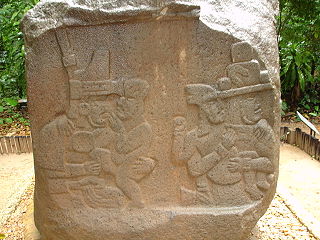 W
WThe Maya Hero Twins are the central figures of a narrative included within the colonial Kʼicheʼ document called Popol Vuh, and constituting the oldest Maya myth to have been preserved in its entirety. Called Hunahpu (Junajpuʼ) and Xbalanque (Ixbʼalankeʼ) in the Kʼicheʼ language, the Twins have also been identified in the art of the Classic Mayas. The twins are often portrayed as complementary forces. The complementary pairings of life and death, sky and earth, day and night, Sun and Moon, among multiple others have been used to represent the twins. The duality that occurs between male and female is often seen in twin myths, as a male and female twin are conceptualized to be born to represent the two sides of a single entity.
Maya mythology is part of Mesoamerican mythology and comprises all of the Maya tales in which personified forces of nature, deities, and the heroes interacting with these play the main roles. The myths of the Pre-Hispanic era have to be reconstructed from iconography. Other parts of Mayan oral tradition are not considered here.
The traditional Maya religion of the extant Maya peoples of Guatemala, Belize, western Honduras, and the Tabasco, Chiapas, and Yucatán states of Mexico is part of the wider frame of Mesoamerican religion. As is the case with many other contemporary Mesoamerican religions, it results from centuries of symbiosis with Roman Catholicism. When its pre-Spanish antecedents are taken into account, however, traditional Maya religion has already existed for more than two millennia as a recognizably distinct phenomenon. Before the advent of Christianity, it was spread over many indigenous kingdoms, all after their own local traditions. Today, it coexists and interacts with pan-Mayan syncretism, the 're-invention of tradition' by the Pan-Maya movement, and Christianity in its various denominations.
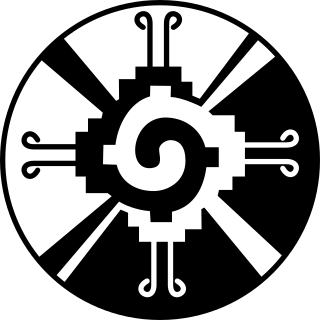 W
WMexicayotl is a movement reviving the indigenous religion, philosophy and traditions of ancient Mexico among the Mexican people.
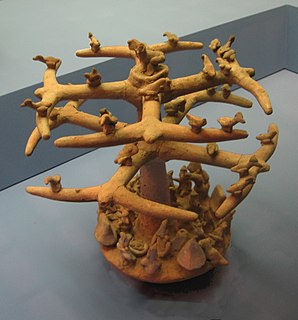 W
WWorld trees are a prevalent motif occurring in the mythical cosmologies, creation accounts, and iconographies of the pre-Columbian cultures of Mesoamerica. In the Mesoamerican context, world trees embodied the four cardinal directions, which also serve to represent the fourfold nature of a central world tree, a symbolic axis mundi which connects the planes of the Underworld and the sky with that of the terrestrial realm.
 W
WLa Xtabay is a Yucatec Mayan myth about the female demon, Xtabay, who targets men in the Yucatán Peninsula. She is said to dwell in the forest to lure men to their deaths with her incomparable beauty. She is described as having beautiful, shining black hair that falls down to her ankles and wearing a white dress. One of the most accepted versions of the myth comes from the book, Diez Leyendas Mayas (1998), written by Jesus Azcorra Alejos.